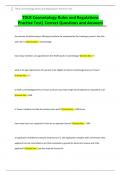College aantekeningen
Summary lectures MAPS (Methodology: Analysing, Presenting, and Scientific writing 7202BA04XY)
- Vak
- Instelling
Lecture notes about MAPS. I achieved a 9.4 for the MAPS exam by using this summary. The exam was mainly about lectures 4, 5 and 6.
[Meer zien]












